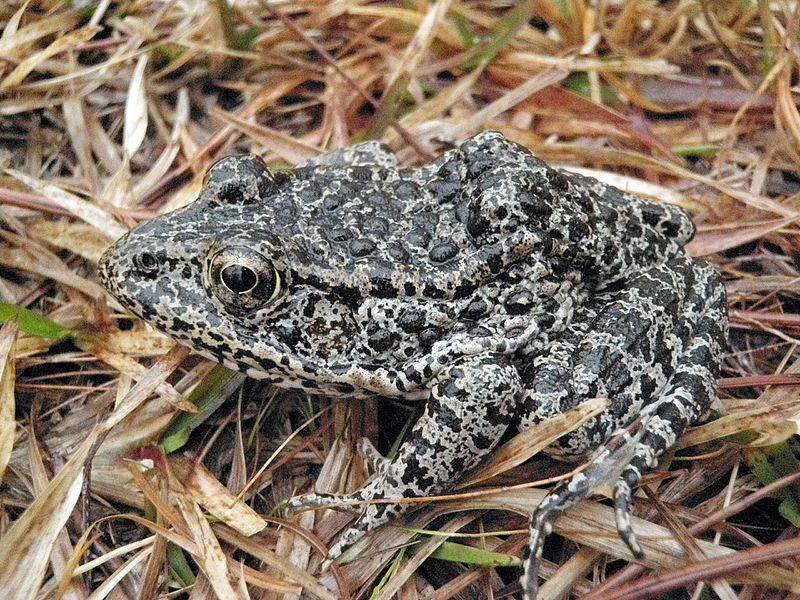The dusky gopher grog is a little-known endangered species only found in a few isolated pond habitats of southern Mississippi. This playful amphibian is apparently rather shy, covering its eyes and playing dead when held by a human. Unfortunately, the species has been struggling to survive for decades, encountering threats such as habitat loss, drought, and disease decimating its fragile population.
Since the frog’s designation as an endangered species in 2001, the U.S. Fish and Wildlife Service (FWS) has implemented efforts to grow its population and geographical range of habitat. To achieve this initiative, part of their strategy includes setting aside land that they determined as a possible future habitat for the frog, in the hopes of introducing populations into those areas. While not currently home to dusky gopher frogs, the agency chose these new potential habitats because they are within the frog’s historical geographic range of habitat, and they have the right conditions necessary for the species’ survival.

Courtesy of U.S. Department of Agriculture, Wikimedia Commons
One block of land that is crucial to FWS’ recovery plan is a privately owned area in eastern Louisiana. FWS decided to designate this land as critical habitat in 2012, drawing resistance from private owners of the land, including a lumber company that owns and manages over 26 million acres of land in the United States and Canada for resource use. The landowners argue that FWS should not be able to supersede their legal right to the land for potential habitat because the habitat does not currently support dusky gopher frog populations. One of the landowners also claims it will suffer an expected loss of $34 million if they are barred from developing the land. The U.S. Department of Justice, on behalf of FWS, argues that the Endangered Species Act (ESA) authorizes the Agency to maintain critical habitat, including in areas that were not part of the species’ initial geographic range when it was listed as endangered. In response to the alleged $34 million loss in development, FWS claims that there are comparable biological benefits that warrant protecting the land.
In 2016, the U.S. Court of Appeals for the Fifth Circuit heard the case and ruled in favor of FWS, stating that they had correctly interpreted the ESA and that the landowners had failed to establish their claims that FWS violated the ESA, the National Environmental Policy Act, and the Commerce Clause. Last year, the landowners asked the Fifth Circuit to rehear the case, but this request was denied. Subsequently, the case was introduced to the U.S. Supreme Court, who agreed in January to hear the case during its October Term in 2018.
The Court will consider two primary issues when hearing this case: (1) whether the ESA forbids designating private land as critical habitat when that land is neither populated by nor required for the rehabilitation of a species; and (2) whether judicial review is the proper means of determining whether an agency can designate critical habitat on the basis of economic impact. The Court will hear the case on October 1, the first day of the new term.
The clash between private and public interests is at the crux of this issue. How do we reconcile the goal for private development with the goal to protect public resources? How do we determine which entity has the proper authority and on what grounds? What does this mean for the future of public-private interactions where environmental issues are concerned? This case will shape the answers to all of these questions, leaving significant implications for the viability of public-private partnerships in conservation. Suddenly, this little-known dusky gopher frog has become part of a monumental case that will not only decide its own fate, but the fate of endangered species and their habitats for years to come.
Improving collaboration in public-private partnerships cannot be emphasized enough: it is necessary to understand how to integrate private and public perspectives, resources, and goals in order to ensure successful conservation. The dusky gopher frog case offers an important opportunity for dialogue on how to bridge the gap between stakeholders at seemingly opposite ends of a spectrum. ELI will host expert panelists in a Member Webinar on October 2 to discuss these complex issues, one day after the Court hears the case. Panelists will comment on the impacts of the case, the legal structure of conservation, and avenues for effective habitat conservation when faced with conflicting interests.
The webinar will be held on Tuesday, October 2, from 12:00PM to 1:30PM. Please register by September 28 to reserve your spot.
Event details can be found here: The Dusky Gopher Frog’s Critical Habitat: Legal Implications for Public-Private Partnerships.
